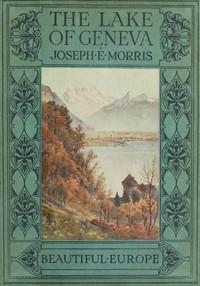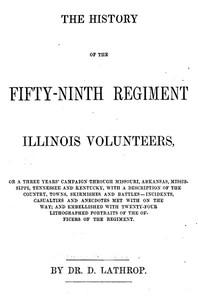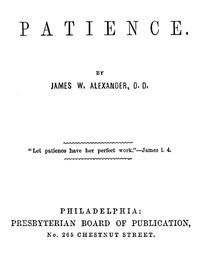|
|
Read this ebook for free! No credit card needed, absolutely nothing to pay.Words: 16322 in 5 pages
This is an ebook sharing website. You can read the uploaded ebooks for free here. No credit cards needed, nothing to pay. If you want to own a digital copy of the ebook, or want to read offline with your favorite ebook-reader, then you can choose to buy and download the ebook.

: The Lake of Geneva by Morris Joseph E Joseph Ernest - Geneva Lake (Switzerland and France)@FreeBooksWed 07 Jun, 2023 FACING PAGE 2. THE JURA RANGE FROM THONON, HAUTE SAVOIE 9 THE LAKE OF GENEVA Whether you feel sympathy, or not, with Calvin, the theologian, who gave us, at not more than twenty-eight years of age, the epoch-making Christian Institutes, or with Calvin, the inflexible governor, who helped to put to death poor Michael Servetus outside the city wall of Geneva, on the garden slopes of Champel, you can hardly fail to realize at least some transient flicker of interest when you contemplate, beneath its solitary fir-tree, and hard by a clump of box, the small, white, oblong stone--it is less than a foot long, and marked simply with the initials J. C.--that is supposed to mark the grave, in the old crowded cemetery near the Plaine du Plainpalais, of Jean Calvin, the politician and man. The cemetery itself is a little hard to find, for it lies hidden away in a commonplace back-quarter of the city, in a part that is far removed from all that is brightest, and most cosmopolitan, and therefore most familiar, in Geneva. Nor, even when you find it, is this grave of Calvin obvious, lost, as it is, amongst a thousand other tombs which rise in some disorder from amidst an inextricable tangle of daisies and long rank grass, of lady's-smock and dandelions. As happens almost always in old burial-grounds in Scotland, there is here an eloquent lack of Christian symbols: Catholics are buried here as well as Protestants, but the spirit of iconoclasm is none the less supreme--plenty of broken columns, of import purely Pagan, but never, I think, the Cross, lest it savour of superstition. This, too, was Wordsworth's experience in the burial-ground at Dumfries: "'Mid crowded obelisks and urns I sought the untimely grave of Burns." Yet here, in this half-forgotten old graveyard, where Calvin was laid to rest when not quite fifty-five years of age, at least there is none of that nightmare horror that broods over Knox's cenotaph in the Necropolis at Glasgow. Calvin and Knox! We group the two in fancy when we stand here in this silent spot, on the edge of that same Geneva--how transfigured to-day in outward aspect not less than in mental outlook!--where Knox once ministered for more than a year in the little church of the Auditoire, and where Calvin once ruled with a rod of iron. At any rate this sombre old burial-ground, when so much else in the Geneva of to-day is almost aggressively gay and modern, is surely not unfitted for the last repose of a spirit so austere, and of logic so relentless. And this is what is written above the entrance: "Heureux ceux qui meurent au Seigneur. Ils reposent de leurs travaux et leurs oeuvres les suivent." Calvin, indeed, is inseparably connected with the greatest moment in Geneva's history. His rule for nearly a quarter of a century of this little city state is chosen by Lord Morley in his Romanes lecture at Oxford in 1897 as an outstanding illustration of what can be accomplished by moral forces in the absence of giant armies and big guns. It is impossible, in fact, to think of historical Geneva without thinking of Calvin, though Calvin himself was by birth a Frenchman, and hailed from the sleepy little city of Noyon , in the department of the Aisne. Rousseau, on the other hand, though Genevese by birth, seems to belong more properly to the French Revolution, and to France. The tall, white tenement where the future author of the "Contr?t Social" lived as a child may still be seen in the St. Gervais quarter, on the right bank of the river, at the junction, if I recollect rightly, of the present Rue Rousseau with the Place de Chevelu, in close proximity to a modiste's establishment and to a shop for the sale of fishing-tackle, and virtually, if not wholly, within sight and hearing of the music and blue swiftness of the Rhone. Actually, however, he was born in his maternal grandfather's house, which has since been pulled down, in the Grande Rue, towards the summit of the hill that is crowned by the Cathedral, in the high-town of Geneva. The old workman's quarter of St. Gervais is perhaps seldom visited by Englishmen, though everybody skirts it, perhaps half-a-dozen times a day, as they traverse the very modern Rue du Mont Blanc on their way to the main railway station, or to the splendid new H?tel-des-Postes. Yet its eighteenth-century streets--this is possibly their date--are at least as full of interest, and are certainly far more typical, than the Parisian-like blocks of new houses that front the modern quays. If you want to realize the aspect of old Geneva properly, before the advent of the railway and the hordes of modern trippers, you should study the curious model now preserved in the splendid new Mus?e d'Art et d'Histoire, in the Rue des Casemates. Then it had no front, in the ordinary sense, towards the lake; and the islands in the Rhone were laden with quaint old tenements. Moreover, the whole city was then surrounded by a ring of many-angled fortifications in the familiar manner of Vauban. If the actual birth-place of Jean Jacques Rousseau in the Grande Rue has perished, no better piece of luck has befallen the house, at No. 11, Rue des Chanoines , in which Calvin, as recorded by an existing tablet, resided from 1543 to his death in 1564. To find authentic associations with Calvin we must pass into the former Cathedral, now the Protestant Church of St. Pierre, where is still preserved a chair on which he is said to have sat to preach. The Cathedral itself, however, is his truest monument, for in this he constantly preached, and in this he delivered judgment. This last is a grand old Romanesque pile, with transeptal towers like those at Exeter; but sadly disfigured externally by an atrocious, Classical, eighteenth-century west front. This, with its Corinthian pillars, might be well enough elsewhere, but is quite out of keeping, like the west front at F?camp, in Normandy, with the older work behind. It must also be acknowledged that here, as at Lausanne, the austere Calvinistic furniture is wholly out of keeping with an interior that was obviously intended for elaborate Catholic ritual. In a very odd position, at the south-west corner of the nave, is the striking fifteenth-century Chapel of the Maccab?es that was built in 1406 by Cardinal Jean de Brogny, who was Bishop of Geneva between 1423 and 1426. The curious name is met with again as far away as Amiens, and may possibly derive from "macabre," the Chapel of the Dead: Brogny, indeed, is said to have built this chapel with a view to his own future interment. In the body of the church there are really several points to notice, though at first its general aspect is repellently cold and bare. In the chancel and south nave aisle remain a number of old stalls with misericordes, one of the last of which is unexpectedly carved with a frog. Other stalls have canopies, apparently much restored, the backs of which are sculptured with figures of Prophets and Apostles, greatly recalling those in the not far distant French cathedral of St. Claude. Included among the rest are David and the Sybil, who was credited with prescience of the coming birth of Christ: "Teste David cum Sybilla." In a chapel on the east of the south transept is the tomb, with a modern statue, of Duke Henri de Rohan, the Protestant leader, who was slain at the battle of Rheinfelden in 1638. The church has, of course, been stripped of its ancient coloured glass, for we can hardly suppose that Calvinistic Geneva of the sixteenth century lacked its local "Blue Dick" or its incorrigible William Dowsing; but luckily two splendid windows have somehow escaped, and are now in safe possession in the Mus?e d'Art et d'Histoire. One is a large figure of St. John the Evangelist, and another of St. Julian or St. James-the-Less. Preserved in the same collection are two fifteenth-century bench-ends, and a fragment of broken stall canopy, that come also from the Cathedral. Immediately round the Cathedral, on the crest of the old acropolis, clusters most of what is still left in Geneva of the ancient city state. City state, in truth, it was, rather than capital, like Sion or Berne, of a canton: the territory, in fact, of Geneva was always insignificant, and merely a civic adjunct--a hundred odd square miles, or so, of suburban orchard, or garden. The Canton of Geneva, in short, was subordinate to the city, and never the city to the canton. "Quand je secoue ma perruque," said Voltaire, "je poudre toute la R?publique." Of ancient municipal buildings, perhaps the most interesting is the H?tel-de-Ville, which exhibits a picturesque Renaissance staircase or inclined plane. Opposite is the old Arsenal, with its outside paintings--a feature that is typically Swiss. We have noticed already the sites of the old houses that were associated respectively with Rousseau and Calvin in the Grande Rue and the former Rue des Chanoines. At the foot of the latter thoroughfare, in the Rue de la P?lisserie, and also marked by a tablet, is the house in which George Eliot resided between October, 1849, and March, 1850. From near the apse of the Cathedral we may descend steeply to the low town along the shore of the lake, either directly, by the Rue de la Fontaine, or, more indirectly, by a network of little streets that cluster round the mediaeval church of the Madelaine. The Rue de la Fontaine in itself is worth a visit, with its tall, old, shabby tenements, like those in the old town at Edinburgh. I forget from what fountain it gets its name; but Geneva, like other towns in Switzerland--like every village in fact--is full of them. None, that I know, has the character, or quaintness, of some of those at Berne; but the pretty Swiss custom of decorating them in summer with growing flowers may be noted here with gratitude and pleasure. The modern splendour of Geneva, to which we descend almost reluctantly from the old, grey, upper city on the heights, if certainly very modern, is also certainly very splendid; and leaves us with the impression that the front towards the quays, with its gardens, and palatial hotels, and gigantic caf?s, is one of the brightest, and gayest, and most animated scenes anywhere to be met with on the Continent. Moreover, it offers at least one point, where the Rhone, like an arrow from the string, suddenly discharges itself from the blue placidity of the lake, and storms in triumphant volume through the openings of the bridges to swirl past the little tree-shaded Ile-de-Rousseau and the other islands that lie behind it, where even the quiet lover of Nature, to whom gay throngs of all sorts are abhorrent, may feed his soul as completely with splendid, natural spectacle as anywhere among the torrents and glaciers of the remotest and most secluded valleys in which this magnificent stream has origin, and from which it descends in thunder, but never in purity like this, to traverse the whole Canton of the Valais from end to end, and to repose at length in quiet in the lake. To lean across the west parapet of the Pont-du-Mont Blanc at Geneva, and to gaze down into this deep volume of absolutely transparent and deep ultramarine water that shoots forward with Alpine strength and lightning-like rapidity, and is only broken into sheets of seething, delicately sky-blue foam at the point where its majestic impetuosity is arrested by the dams of the electric works, is to come face to face with just such a combination of natural force and loveliness as is nowhere, I think, to be found in Britain, and perhaps at few spots in the Alps. The extraordinarily deep-blue colour of the Lake of Geneva, and of the Rhone where it first emerges, and before it is polluted by the influx of the grey and glacier-stained Avre--till the last state of the Rhone, below Geneva, is no better than its first, above Villeneuve--has been the subject of comment and learned inquiry, but has never, unless I mistake, been satisfactorily explained. Most other Alpine lakes, whether in Switzerland or Italy, are deep, or emerald, green: and emerald, or deep green, are the strong rivers that discharge from them--the Linth from Zurich, or the Reuss at Lucerne, or the noble Aar that lends grace to Thun. Tennyson tells us how Guinevere and Lancelot rode together in the may-time woods Free books android app tbrJar TBR JAR Read Free books online gutenberg More posts by @FreeBooks
: The History of the Fifty-ninth Regiment Illinois Volunteers by Lathrop David - United States History Civil War 1861-1865 Regimental histories Illinois; United States. Army. Illinois Infantry Regiment 59th (1862-1865); Missouri Infantry. 9th Regiment 1861-1@FreeBooksWed 07 Jun, 2023

: Green Eyes by Snell Roy J Roy Judson - Treasure troves Juvenile fiction; Mystery and detective stories; Romanies Juvenile fiction; Women detectives Juvenile fiction; Huron Lake (Mich. and Ont.) Description and travel Juvenile fiction@FreeBooksWed 07 Jun, 2023
|
Terms of Use Stock Market News! © gutenberg.org.in2025 All Rights reserved.






